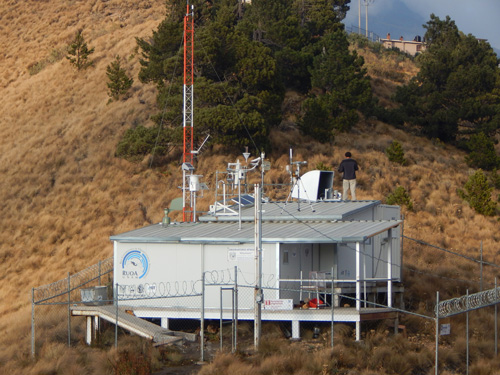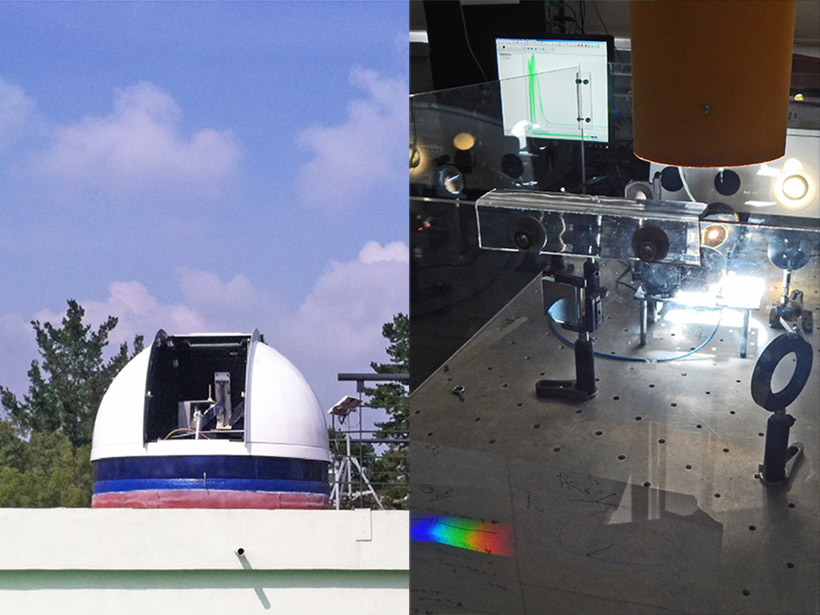Latin American researchers and young scientists had the opportunity to learn about optical remote sensing techniques for studying atmospheric composition during a 1-week course in December 2015 in Mexico City. The course, which focused on theoretical concepts as well as practical training, examined the results of research conducted by different teams working in Latin America.

Another aim of the course was to promote the organization of observational networks and collaborations in the region. The course, held at the Center for Atmospheric Sciences of the Universidad Nacional Autónoma de México (UNAM), was part of the International Global Atmospheric Chemistry (IGAC) project’s initiatives to contribute to building capacity and international collaborations.
A total of 44 participants (advanced undergraduate and Ph.D. students, as well as postdocs and industry researchers) and 11 lecturers attended the course, representing 13 countries. The lectures were given in Spanish by eight experts from Latin America, one from Europe, and two from the United States.
The subjects covered widely used techniques such as differential optical absorption spectroscopy, Fourier transform infrared spectroscopy, solar photometry, and light detection and ranging (lidar). Lectures addressed recent advances from ground-based and satellite instrument deployments. Male and female students, present in equal numbers, had the opportunity to present their research in a poster session.
The attendees visited the atmospheric observatory of Altzomoni, a station contributing to the Network for the Detection of Atmospheric Composition Change and the University Network of Atmospheric Observatories of Mexico. The research facility, located nearly 4000 meters above sea level in Iztaccíhuatl-Popocatépetl National Park, is used to study upper atmospheric variability, transport of pollution from urban and industrial centers, and the emissions from a nearby active volcano.

The course provided a unique opportunity for establishing connections among Latin American scientists using similar remote sensing techniques for atmospheric research, enabling them to identify their common research interests, improve existing communication, and plan future collaborations.
Among the outcomes of the course was an agreement to conduct further courses with a higher level of specialization in the individual techniques. Attendees also reached a consensus for organizing a photometric network in Latin America in coordination with the Aerosol Robotic Network and the IGAC Americas Working Group. The aim is to improve the operation of existing Sun photometers in Latin America, which would decrease the gaps in future series of observations, increase data quality, and foster their use in atmospheric research.
—M. Grutter, Centro de Ciencias de la Atmósfera, Universidad Nacional Autónoma de México, Mexico City, Mexico; email: [email protected]; Juan Carlos Antuña-Marrero, Grupo de Óptica Atmosférica de Camagüey, Meteorological Institute, Camagüey, Cuba; and Carlos Rudamas, Laboratorio de Espectroscopia Óptica, Escuela de Física, Universidad de El Salvador, San Salvador, El Salvador
Citation: Grutter, M., J. C. Antuña-Marrero, and C. Rudamas (2016), Mexico City hosts a course on remote sensing for Latin Americans, Eos, 97, doi:10.1029/2016EO051059. Published on 4 May 2016.
Text © 2016. The authors. CC BY-NC-ND 3.0
Except where otherwise noted, images are subject to copyright. Any reuse without express permission from the copyright owner is prohibited.

